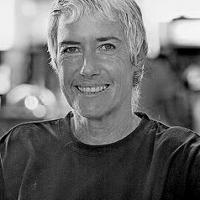 That was the key finding of a high-level report, commissioned by the Presidential Climate Commission and compiled by a Nelson Mandela University development studies team led by Prof Janet Cherry.
That was the key finding of a high-level report, commissioned by the Presidential Climate Commission and compiled by a Nelson Mandela University development studies team led by Prof Janet Cherry.
The commission has adopted the report and it was launched officially at a Presidential Climate Commission event on Friday.
Cherry said on Tuesday the report, geared as a response to the Just Transition Framework’s call for the development of “affordable, decentralised, diversely owned renewable energy systems”, had been well received.
“Delegates called it ‘exceptional’ and ‘innovative’, with aspects never dealt with before, so we were delighted.”
She said the huge rollout of rooftop solar promised by President Cyril Ramaphosa in 2022 had transpired as he and most energy analysts had forecast, since the change in regulations freed up the market.
“But it has not yet benefited the majority of citizens, who cannot afford private solar energy systems.”
Cherry said her team had proposed four models which would dovetail with the new regulations and also start creating benefits for the poor.
“In the ‘mini-grid model’, one sub-model is designed for urban informal settlements, where the majority experience energy poverty challenges such as reliance on unsafe fuels for their basic energy needs, leading to risk of injury, loss of life and property damage.
“In the second sub-model, for rural villages, the mini-grids should be installed where it is too costly or difficult for Eskom or the local municipality to connect households and small businesses to the main grid.”
She said the technology could be solar, small-scale wind or micro-hydro and the model offered various benefits.
“These include the opportunity for residents to produce their own energy, mitigate against load-shedding, create work opportunities, and have a positive impact on their health and the environment.”
She said in the “grid-tied model”, socially marginalised communities organised into co-operatives of 35 households could benefit.
“The technology involves the installation of solar panels on household rooftops and public open spaces.
“The potential scenarios for remuneration include selling electricity to an energy trader, selling to the municipality, or using the electricity for the community’s use.”
Cherry said the renewable energy independent power producer programme model would best benefit rural communities on communal land.
“Leasing the communal land to renewable energy projects enables rural communities to earn additional income through a partnership agreement with an independent power producer.
“The purpose of this model is to contribute to the national energy supply and benefit society through energy provision to the national grid or reduced demand on the grid.”
She said the “worker-owned co-operative model” was ideal for renewable energy installation on a factory site with an existing grid connection.
“It is intended to work in collaboration with local government and address the impact of the carbon border adjustment mechanism.
“The model aims to support the energy transition in the manufacturing industry, with a focus on securing a stable electricity supply and protecting jobs and workers’ income.
“The technology proposed is a photovoltaic solar array on a factory rooftop or car park, with the potential for a hybrid grid combining solar, wind and green hydrogen.”
Published on 14 March 2024 in The Herald by Guy Rogers